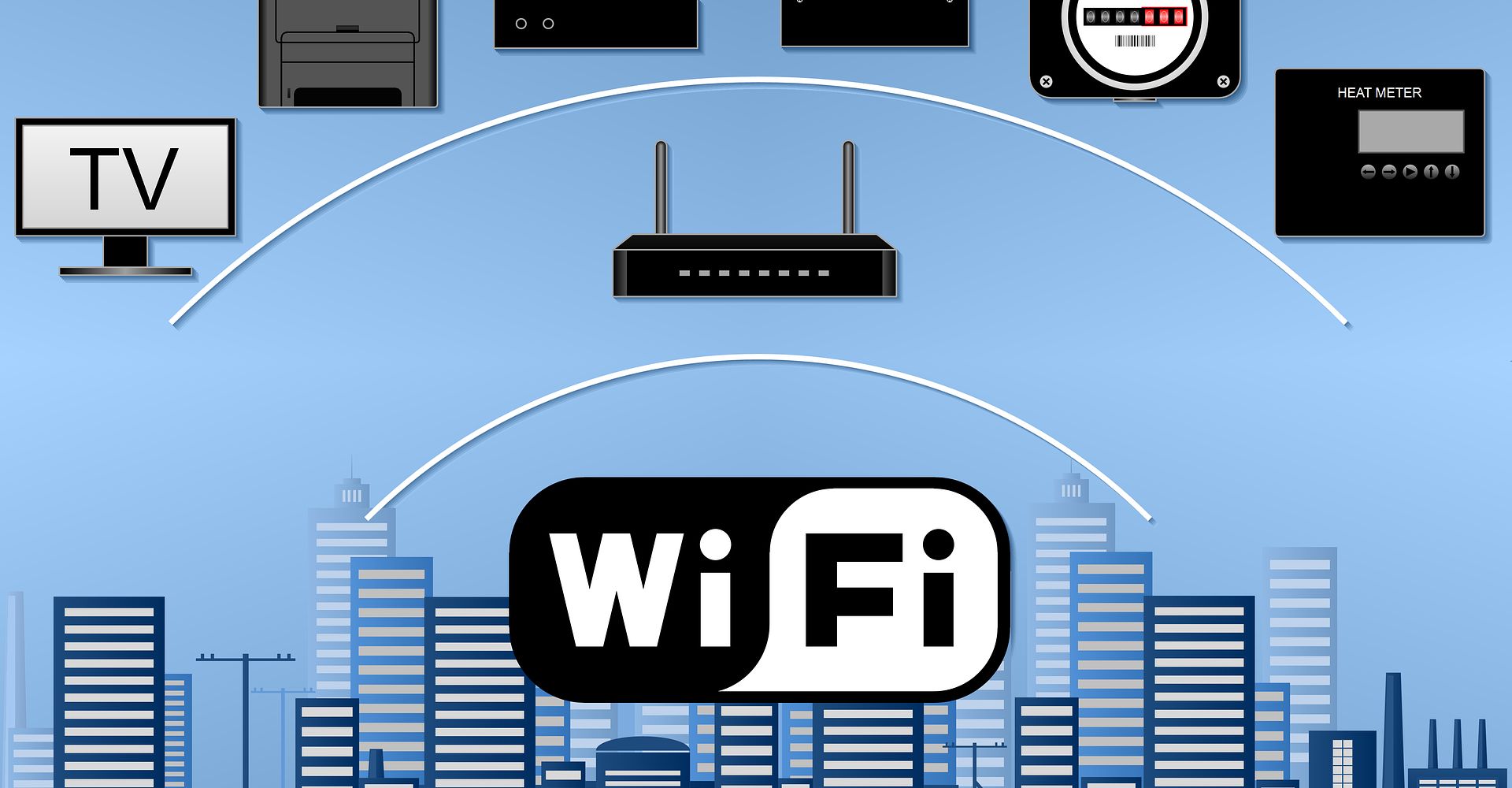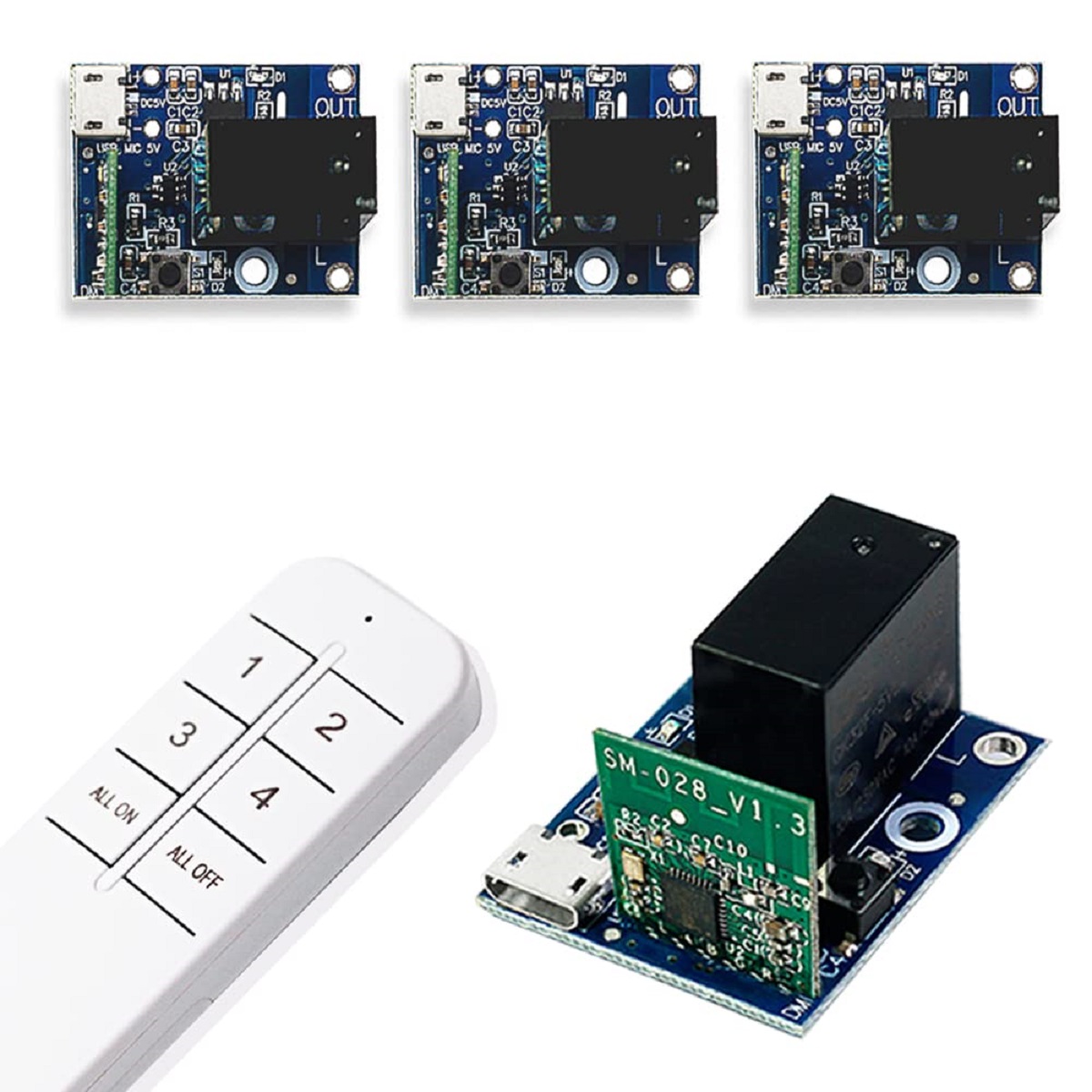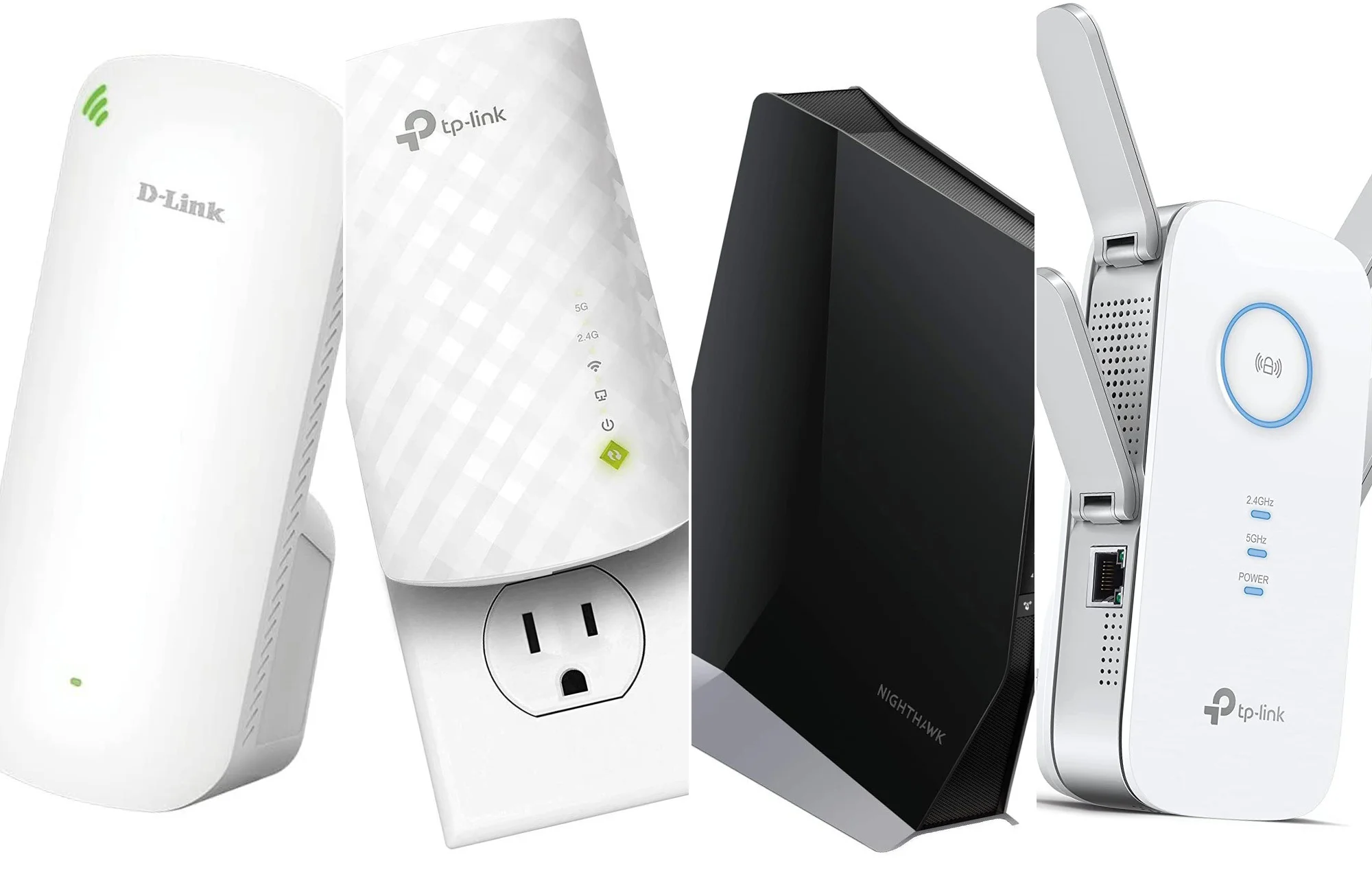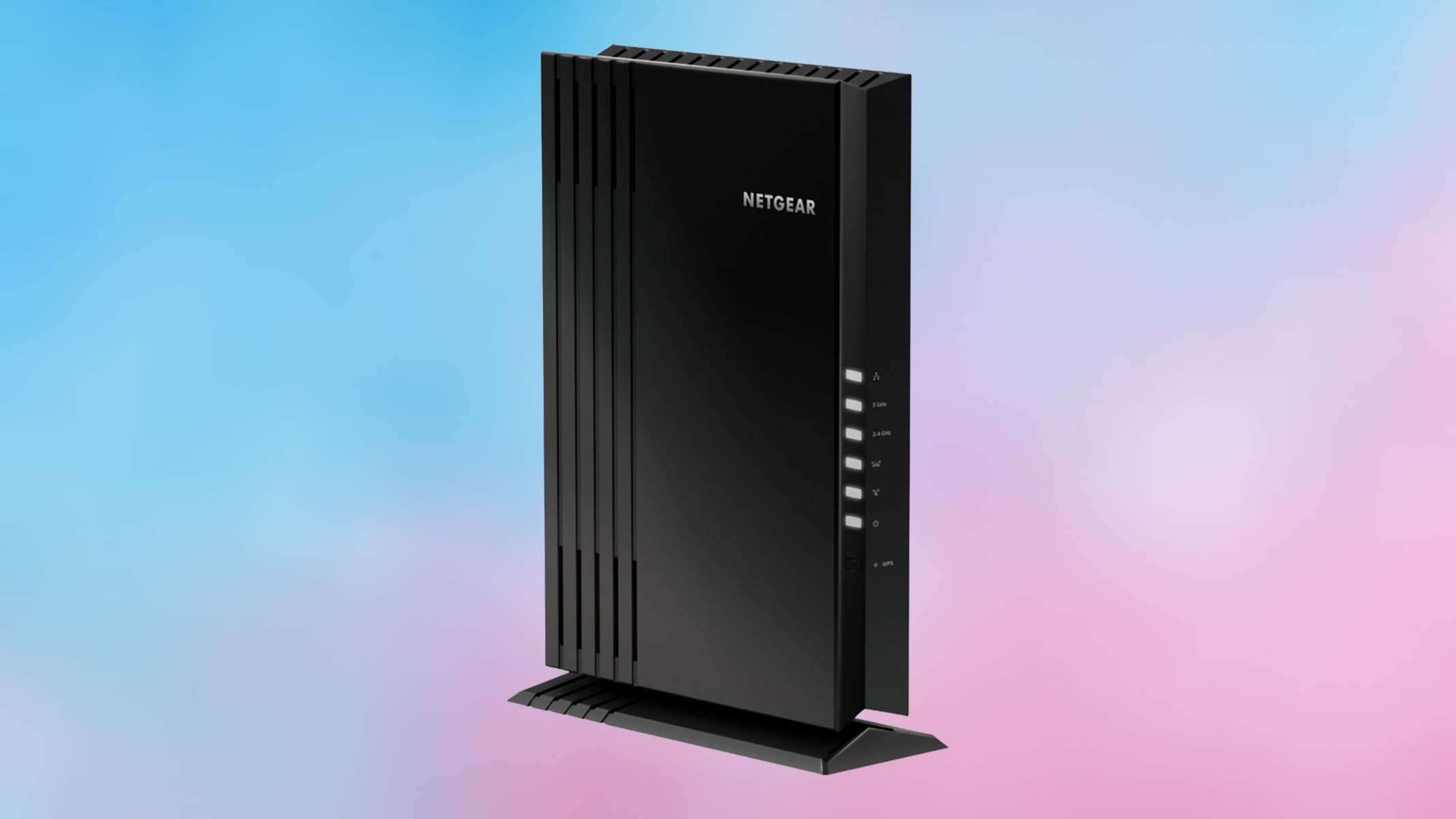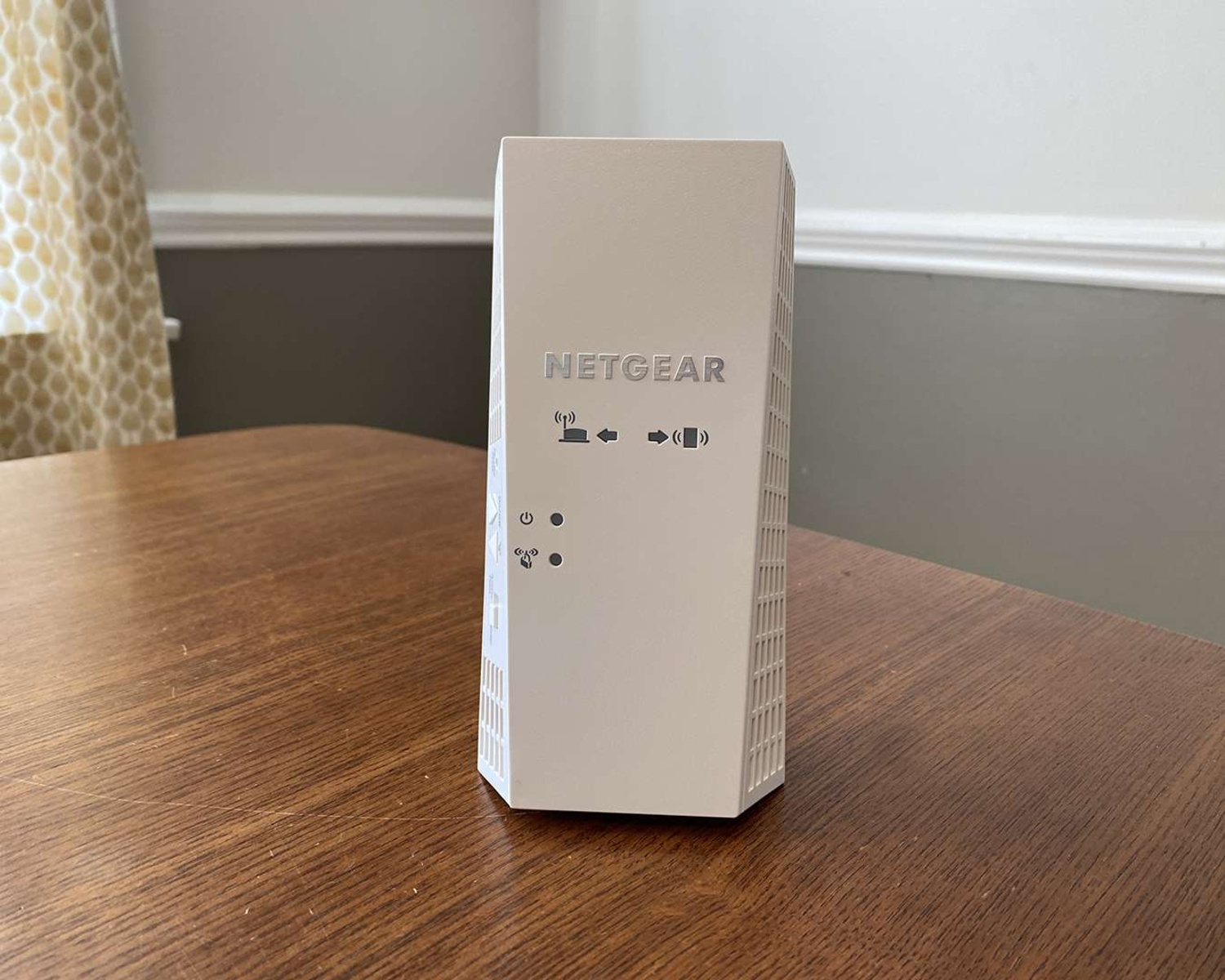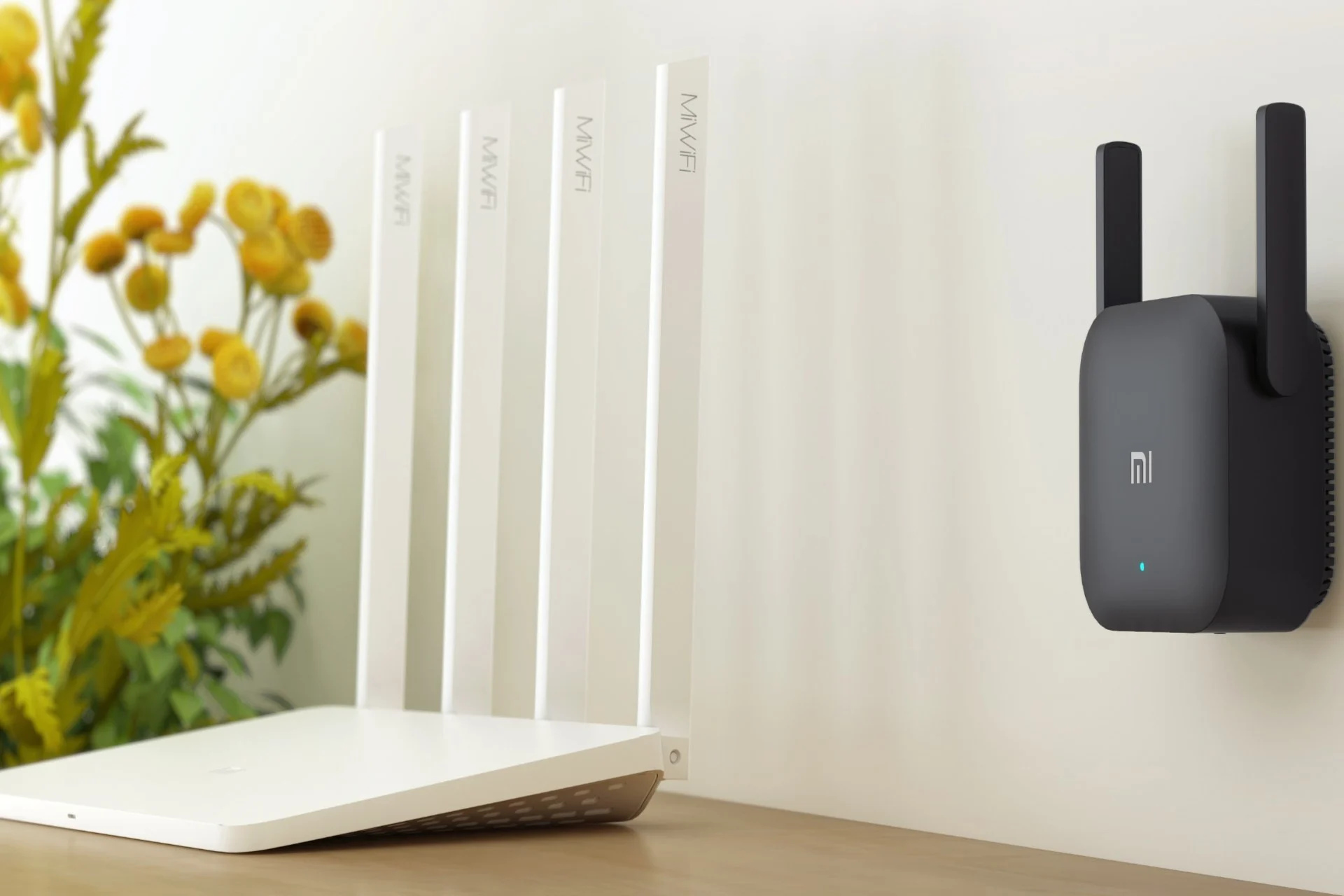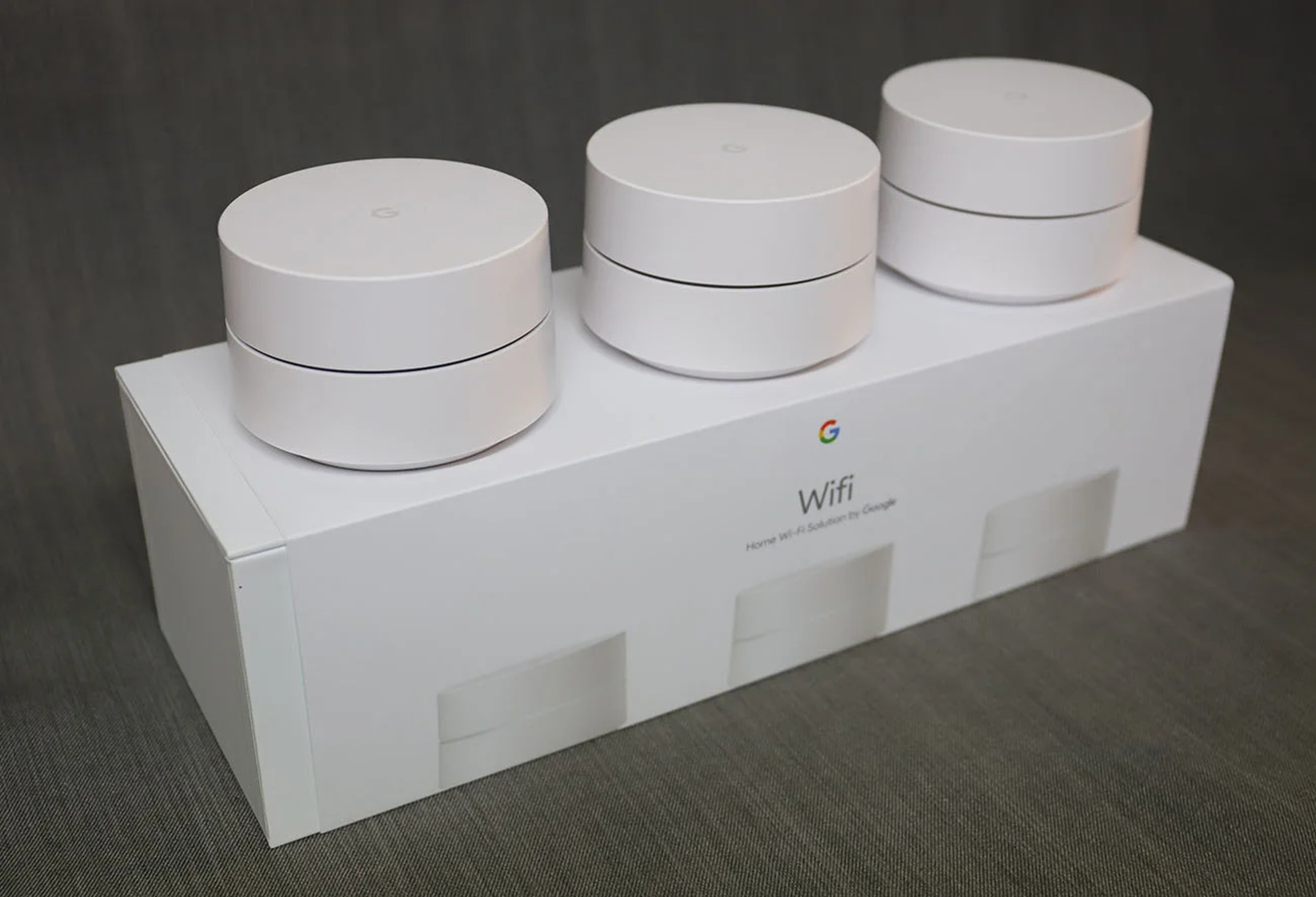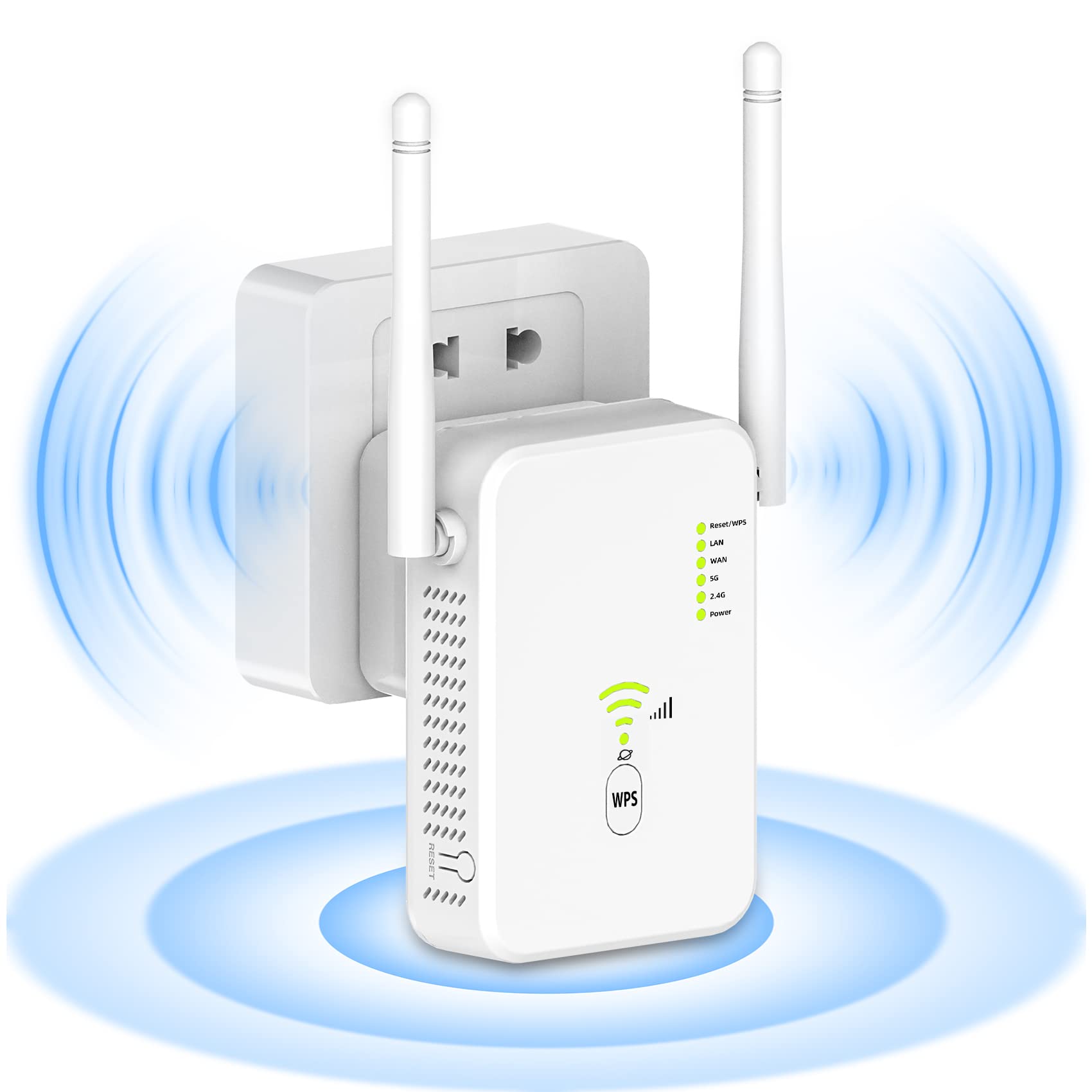Introduction
WiFi has become an essential part of our daily lives. Whether we are at home, in the office, or even at a café, we rely on WiFi to connect our devices to the internet. But have you ever wondered how WiFi actually works? In this article, we will delve into the world of WiFi and explore its basic concepts, technologies, and functionality.
WiFi, short for Wireless Fidelity, is a technology that allows electronic devices to connect to the internet or communicate with each other without the use of cables or wires. It has revolutionized the way we access information, stay connected, and enjoy various online activities. From streaming videos to making video calls, WiFi has become an integral part of our digital lifestyles.
At its core, WiFi harnesses the power of radio waves to transmit and receive data. It operates within the unlicensed frequency bands, making it accessible to anyone with compatible devices. WiFi is widely used in homes, offices, public places, and even on the go, thanks to the proliferation of WiFi hotspots.
One of the key advantages of WiFi is its versatility. It can support numerous types of devices, such as smartphones, laptops, gaming consoles, smart TVs, and IoT devices. This allows for seamless connectivity and communication across various platforms and services.
WiFi is not just limited to a single building or location. With the advent of WiFi extenders and mesh WiFi systems, it is now possible to create a seamless network that covers larger areas, eliminating dead zones and ensuring strong signal strength throughout.
In the next sections, we will explore the fundamental concepts of WiFi, including wireless signals, operating frequency, channels, WiFi standards, hardware, architecture, security, and more. By understanding how WiFi works, you will have a clearer picture of the technology behind the wireless connectivity that powers our modern world.
What is WiFi?
WiFi, short for Wireless Fidelity, is a technology that enables devices to connect to the internet or communicate with each other wirelessly. It provides a convenient and efficient way to access the internet, eliminating the need for physical cables or wires.
WiFi operates through the use of radio waves, which are transmitted and received by WiFi-enabled devices. These devices, such as smartphones, laptops, tablets, and smart home devices, are equipped with a WiFi chip that allows them to connect to WiFi networks.
WiFi networks consist of two main components: a wireless access point (router) and client devices. The wireless access point acts as a central hub, transmitting and receiving data between the connected devices and the internet. It creates a local network and provides a connection to the internet through an Internet Service Provider (ISP).
When a device wants to connect to a WiFi network, it searches for available networks in the area. It then sends a request to the wireless access point, providing the necessary authentication credentials (such as a password) to establish a connection. Once the connection is established, the device can access the internet or communicate with other devices on the same network.
WiFi networks operate within specific frequency bands, such as 2.4 GHz and 5 GHz. These frequency bands are divided into channels, allowing multiple devices to connect simultaneously without interference. Different WiFi standards define the specific protocols and technologies used to transmit and receive data over these frequency bands.
One of the advantages of WiFi is its convenience and flexibility. Users can connect their devices to WiFi networks and enjoy wireless internet access from anywhere within the range of the network. This allows for mobility and freedom to use devices without being tethered to a physical connection.
WiFi has become ubiquitous in our daily lives, making it easy to stay connected and access online services. From browsing the web to streaming videos, playing online games, or controlling smart home devices, WiFi has become an indispensable technology that enhances our digital experiences.
However, it’s important to note that WiFi networks have limitations in terms of range and signal strength. The distance between the device and the wireless access point can affect the quality of the connection. Additionally, factors such as physical barriers, interference from other devices, and network congestion can impact WiFi performance.
In the following sections, we will delve deeper into the technical aspects of WiFi, including the concepts of wireless signals, operating frequency, WiFi standards, hardware components, architecture, and security measures. Understanding these concepts will provide a comprehensive understanding of how WiFi works and how to optimize its performance.
Basic Concepts
To understand how WiFi works, it’s important to familiarize ourselves with some basic concepts related to wireless networking. Let’s explore these concepts:
1. Wireless Signals: WiFi operates through the transmission and reception of wireless signals, which are electromagnetic waves. These signals carry data in the form of radio frequency (RF) waves and are generated by the wireless access point (router) and received by client devices.
2. Operating Frequency and Channels: WiFi networks operate within specific frequency bands, such as 2.4 GHz and 5 GHz. These bands are divided into channels, each representing a specific frequency range. The choice of frequency band and channel affects the range, speed, and interference of the WiFi network.
3. WiFi Standards: WiFi standards, such as IEEE 802.11b/g/n/ac/ax, define the protocols and technologies that enable devices to communicate and interact with each other over WiFi networks. These standards specify the maximum data transfer rates, network security protocols, and compatibility requirements.
4. WiFi Hardware: WiFi networks consist of hardware components, including the wireless access point (router) and client devices. The router acts as the central hub, while client devices, such as smartphones, laptops, and IoT devices, connect to the router to access the network and the internet.
5. WiFi Architecture: WiFi networks can be set up in various architectural configurations, such as a single router, multiple routers in a mesh network, or range extenders. The architecture determines the coverage area, signal strength, and network performance.
6. Network Protocol: WiFi networks use network protocols, such as Transmission Control Protocol/Internet Protocol (TCP/IP), to enable communication between devices. TCP/IP allows for the reliable and efficient transfer of data packets over the WiFi network.
7. WiFi Range and Coverage: The range and coverage of a WiFi network depend on several factors, including the transmit power of the router, obstacles in the environment, signal interference, and the sensitivity of client devices. Various techniques, such as antenna design and signal boosting, are used to extend the WiFi range.
8. Network Congestion: In densely populated areas or environments with multiple WiFi networks nearby, network congestion can occur. This can result in reduced performance and slower data transfer rates. Advanced WiFi technologies, such as beamforming and channel bonding, help mitigate network congestion.
These basic concepts lay the foundation for understanding the inner workings of WiFi networks. In the next section, we will explore how WiFi signals are transmitted and received, and how they are used to establish a connection between devices.
Wireless Signals
Wireless signals are at the core of WiFi technology, enabling the transmission and reception of data between devices. These signals are electromagnetic waves that carry information in the form of radio frequency (RF) waves.
WiFi signals operate within specific frequency bands allocated for wireless communication. The two primary frequency bands used in WiFi networks are 2.4 GHz and 5 GHz. Each frequency band is divided into multiple channels, and the choice of channel depends on factors such as signal interference and available bandwidth.
The wireless access point (router) acts as the transmitter, while client devices, such as smartphones, laptops, and IoT devices, act as the receivers. The router generates the wireless signals and sends them out into the surrounding area.
WiFi signals propagate through the air in all directions from the router, creating an invisible wireless network. When devices are within the range of the WiFi network, they can detect the wireless signals and establish a connection with the router.
The strength of a WiFi signal is measured in terms of signal strength or signal quality, typically represented as signal bars or a decibel-milliwatt (dBm) value. Signal strength is influenced by several factors, such as distance from the router, physical obstacles, and signal interference from other devices or networks.
One of the key aspects of WiFi signal transmission is modulation. Modulation refers to the process of modifying the characteristics of a carrier wave (the WiFi signal) to encode and transmit data. The two most common types of modulation used in WiFi are Amplitude Modulation (AM) and Phase Modulation (PM).
The router modulates the WiFi signal by varying its amplitude or phase according to the binary data being transmitted. These modulated signals are then transmitted as RF waves into the surrounding environment.
Client devices receive the modulated WiFi signals and demodulate them to retrieve the original data. This process involves extracting the encoded information from the received RF waves and converting it back into its original format.
In order to maintain a stable and reliable WiFi connection, it’s important to minimize signal interference. Interference can occur when other devices or networks operate on the same frequency band or channel as the WiFi network.
Some common sources of WiFi signal interference include microwave ovens, cordless phones, Bluetooth devices, and neighboring WiFi networks. To mitigate interference, WiFi networks make use of mechanisms such as frequency hopping, channel bonding, and advanced modulation techniques.
Understanding how WiFi signals work and the factors that affect their strength and quality is crucial for optimizing the performance of a WiFi network. In the next section, we will explore the different operating frequencies and channels available in WiFi networks and how they impact signal performance.
Operating Frequency and Channels
In WiFi networks, operating frequency and channels play a crucial role in determining the range, speed, and performance of the network. Let’s take a closer look at these concepts:
Operating Frequency: WiFi networks operate within two primary frequency bands: 2.4 GHz and 5 GHz. The 2.4 GHz band has a longer wavelength, providing better coverage over longer distances and better penetration through physical obstacles such as walls. However, it is more susceptible to interference from other devices operating in the same frequency range, such as cordless phones and microwaves.
The 5 GHz band, on the other hand, has a shorter wavelength, allowing for faster transmission speeds and less interference. However, its coverage range is shorter, and the signal can be attenuated more easily by physical obstacles.
Channels: Each frequency band is divided into multiple channels to provide more space for different WiFi networks to operate without interference. In the 2.4 GHz band, there are 14 channels available, but only three non-overlapping channels (1, 6, and 11) that do not interfere with each other. This means that in crowded areas with multiple WiFi networks, interference can occur due to overlapping channels.
In the 5 GHz band, there are more channels available, providing better options for reducing interference. This band supports up to 24 non-overlapping channels, depending on the country or regulatory domain. This increased number of channels allows for better channel allocation and reduces the likelihood of interference.
WiFi routers and devices have the ability to automatically select the best available channel, usually through a process called channel scanning. Channel scanning allows the router to analyze the surrounding WiFi networks and select the least congested channel for optimal performance.
Channels can also be manually adjusted in the router’s settings, but it is important to ensure compliance with local regulations and avoid overlapping with nearby networks to prevent interference.
It’s worth noting that while the availability of multiple channels helps reduce interference and congestion, neighboring WiFi networks can still impact the overall performance of a WiFi network. In dense urban areas or crowded environments, it is common to experience reduced speeds or intermittent connectivity due to the shared nature of the airwaves.
Optimizing the selection of operating frequency and channels is crucial to ensure the best performance and reliability of a WiFi network. By properly managing the frequency bands and channel allocation, it is possible to mitigate interference and improve the overall user experience.
In the next section, we will explore the different WiFi standards and their impact on network performance and capabilities.
WiFi Standards
WiFi standards define the protocols and technologies used in wireless networking, ensuring compatibility and interoperability between different devices. These standards are established by the Institute of Electrical and Electronics Engineers (IEEE) under the IEEE 802.11 family. Here are some key WiFi standards:
802.11b: This was the first widely adopted WiFi standard, operating in the 2.4 GHz band. It had a maximum data rate of 11 Mbps (megabits per second) and supported a range of about 100 meters. Despite its slower speed compared to later standards, 802.11b remains compatible with many devices today.
802.11g: This standard also operates in the 2.4 GHz band but introduced improvements in data rate, reaching up to 54 Mbps. 802.11g is backward compatible with 802.11b devices, providing faster speeds and better overall performance.
802.11n: Commonly referred to as “WiFi 4,” 802.11n operates in both the 2.4 GHz and 5 GHz bands, offering data rates of up to 600 Mbps. This standard introduced Multiple Input Multiple Output (MIMO) technology, which utilizes multiple antennas to enhance signal strength and improve overall coverage. 802.11n is backward compatible with older WiFi standards.
802.11ac: Also known as “WiFi 5,” 802.11ac operates exclusively in the 5 GHz band and offers improved data rates and performance compared to previous standards. It supports multi-user MIMO, allowing for concurrent data transmissions to multiple devices. With theoretical data rates of up to 6.77 Gbps, 802.11ac is well-suited for high-bandwidth applications such as HD video streaming and online gaming.
802.11ax: Commonly known as “WiFi 6,” 802.11ax is the latest WiFi standard, designed to improve network efficiency in crowded environments. It supports multi-user MIMO, uplink and downlink OFDMA (Orthogonal Frequency Division Multiple Access), and higher data rates. WiFi 6 devices can deliver faster and more reliable connections, especially when multiple devices are connected simultaneously. It operates in both the 2.4 GHz and 5 GHz bands.
These WiFi standards are backward compatible, which means that devices supporting newer standards can connect to networks using older standards. However, the network’s performance will be limited to the capabilities of the lowest supported standard.
When choosing a WiFi router or device, it is essential to consider the supported WiFi standards and choose the one that meets your specific needs. Upgrading to a newer WiFi standard can improve speed, bandwidth, and overall network performance.
WiFi standards continuously evolve to meet the growing demands of wireless communication. As technology advances, future WiFi standards are expected to deliver even faster speeds, lower latency, and improved network efficiency.
In the following sections, we will explore WiFi hardware, architecture, and the inner workings of how WiFi networks transmit and receive data.
WiFi Hardware
WiFi hardware consists of various components that enable the transmission and reception of wireless signals. These components are essential for establishing and maintaining WiFi connections. Let’s explore the key hardware elements:
Wireless Access Point (Router): The wireless access point, commonly known as a router, is the central hub of a WiFi network. It connects to the internet through an Internet Service Provider (ISP) and enables communication between client devices and the internet. Routers have built-in antennas or external antennas that transmit and receive wireless signals.
Client Devices: Client devices are the devices that connect to the WiFi network, such as smartphones, laptops, tablets, smart TVs, and gaming consoles. These devices are equipped with WiFi chips that allow them to communicate with the wireless access point.
WiFi Adapter: If a device does not have a built-in WiFi chip, a WiFi adapter can be used to enable WiFi connectivity. WiFi adapters are small USB or PCIe devices that connect to the device and add wireless capabilities.
Antennas: Antennas play a crucial role in transmitting and receiving WiFi signals. Routers have built-in antennas, while some models offer the option to connect external antennas for improved signal strength and range. Antennas can be omnidirectional, radiating signals in all directions, or directional, focusing signals in specific directions.
Modem: While not directly related to WiFi functionality, modems are often integrated into routers. A modem connects the router to the internet service provider, allowing access to the internet. In some cases, a separate modem is required, and the router connects to the modem to provide WiFi connectivity.
Network Interface Card (NIC): NIC is the hardware component responsible for connecting a device to a network, including WiFi networks. It enables the device to send and receive data over the WiFi network. Most modern devices come with an integrated NIC, while older devices may require a separate WiFi adapter.
WiFi hardware is continuously evolving to support the increasing demand for faster and more reliable wireless connections. Advanced technologies, such as beamforming and MU-MIMO (Multi-User Multiple-Input Multiple-Output), are being integrated into routers and client devices to improve signal strength, coverage, and overall network performance.
When choosing WiFi hardware, consider factors such as supported WiFi standards, maximum data transfer rates, and the number of available Ethernet ports. Additionally, it is essential to ensure that the hardware is compatible with the devices you intend to connect to the WiFi network.
In the next sections, we will explore the architecture and inner workings of how WiFi networks transmit and receive data, providing a deeper understanding of WiFi technology.
WiFi Architecture
WiFi networks are structured in a specific architecture that allows devices to connect and communicate wirelessly. Understanding the WiFi architecture is crucial to comprehend how data is transmitted and received over a WiFi network. Let’s explore the key components of WiFi architecture:
Wireless Access Point (Router): The wireless access point, commonly referred to as a router, serves as the central hub of a WiFi network. It connects to the internet through an Internet Service Provider (ISP) and creates a local network within a specific range. The router transmits and receives wireless signals, allowing devices to connect to it and access the internet.
Client Devices: Client devices, such as smartphones, laptops, and smart home devices, are the devices that connect to the WiFi network to access the internet or communicate with other devices on the same network. These devices have built-in WiFi chips or use WiFi adapters to establish a wireless connection with the router.
Network Protocol: WiFi networks use network protocols, specifically TCP/IP (Transmission Control Protocol/Internet Protocol), to facilitate communication between devices. TCP/IP ensures reliable data transmission over the network by dividing data into packets, addressing them, and ensuring their successful delivery.
Local Network: The router creates a local network, also known as a LAN (Local Area Network), within a specific range. Devices connected to the router can communicate with each other within this local network, even if they are not directly connected to the internet.
Internet Service Provider (ISP): The ISP provides the internet connection to the router. It connects the router to the larger internet infrastructure, allowing devices on the WiFi network to access online services, browse the web, and use various internet-based applications.
WiFi Extenders and Mesh Systems: In larger spaces or areas with weak WiFi signals, additional components, such as WiFi extenders or mesh systems, can be used to enhance the coverage and range of the WiFi network. WiFi extenders amplify the existing WiFi signal, while mesh systems use multiple access points placed strategically throughout the area to create a seamless WiFi network.
The WiFi architecture allows for multiple client devices to connect to a single router and share the available bandwidth. When a device wants to access the internet, it sends data packets to the router, which then routes the packets to the destination on the internet. The router also receives data packets destined for client devices and forwards them to the appropriate devices on the local network.
It’s important to consider the architecture and coverage of a WiFi network when setting up a WiFi network at home, office, or other spaces. Factors such as the physical layout, number of devices, and signal strength need to be taken into account to ensure optimal performance and coverage.
In the following sections, we will explore the inner workings of how WiFi networks transmit and receive data, providing a comprehensive understanding of WiFi technology.
How Does WiFi Work?
WiFi works by using radio waves to transmit and receive data wirelessly between devices and a router. Let’s explore the processes involved in establishing and maintaining a WiFi connection:
1. Device Connection: When a device, such as a smartphone or laptop, wants to connect to a WiFi network, it scans the area for available networks. It sends a connection request to the wireless access point (router), which may require authentication credentials, such as a password. Once the device is authenticated, it is assigned an IP address, which allows it to communicate within the network.
2. Data Transmission: Once connected to the WiFi network, devices can send and receive data packets. When a device wants to access the internet or communicate with another device on the network, it breaks the data into smaller packets and attaches routing information to them. The device then transmits the packets wirelessly to the router.
3. Routing and Forwarding: The router receives the data packets and checks the routing information to determine their destination. It uses network protocols, such as TCP/IP, to route the packets through the local network and to the target device or the internet. The router may also perform Network Address Translation (NAT), which allows multiple devices to share a single IP address provided by the ISP.
4. Data Reception: When the target device or the internet responds to the data packets, the router receives them and forwards them to the appropriate device on the WiFi network. The receiving device reassembles the packets, extracting the data and presenting it to the user in the required format, such as a web page or media file.
5. Signal Strength and Range: The strength and range of a WiFi signal depend on various factors, such as the transmit power of the wireless access point, the physical obstacles in the environment, and the sensitivity of client devices. Poor signal strength or interference can result in slower data transfer rates or unstable connections.
6. WiFi Channels: WiFi networks operate within specific frequency bands and are divided into multiple channels. Channels help reduce interference between neighboring networks. The router can automatically or manually select the best channel to optimize performance and reduce congestion.
7. Security Measures: WiFi networks employ various security measures to protect data transmission. These include encryption, such as WPA2 (WiFi Protected Access II), which scrambles the data packets to prevent unauthorized access, and authentication mechanisms, such as passwords or network keys, to ensure only authorized devices can connect.
By using these processes, WiFi technology enables wireless connectivity and allows devices to access the internet and communicate with each other. The versatility and convenience of WiFi have made it an integral part of daily life, powering seamless connectivity in homes, offices, cafes, and public spaces.
It’s worth noting that WiFi performance can vary based on factors such as signal strength, network congestion, and the number of connected devices. Regular maintenance, proper router placement, and choosing the appropriate WiFi channel can help optimize WiFi performance.
In the next section, we will explore WiFi security measures and the importance of protecting your WiFi network from unauthorized access.
WiFi Security
WiFi security is a critical aspect of maintaining a safe and reliable wireless network. With the proliferation of WiFi networks and the increasing reliance on wireless connectivity, it’s essential to protect your WiFi network from unauthorized access and potential security threats. Here are some key security measures:
1. Encryption: The encryption of data transmitted over a WiFi network is crucial for ensuring its confidentiality. WPA2 (WiFi Protected Access II) is the current industry-standard encryption protocol recommended for WiFi networks. It utilizes strong encryption algorithms to scramble data packets, making them unreadable to unauthorized users.
2. Network Authentication: To control access to the WiFi network, it’s essential to implement network authentication mechanisms. This typically involves setting up a strong and unique password or network key. With proper network authentication, only devices with the correct credentials can connect to the WiFi network.
3. Router Configuration: Modifying the default settings of your router can significantly enhance WiFi security. Some crucial configuration steps include changing the default administrator password, disabling remote management access, and disabling unnecessary services or features that may introduce vulnerabilities.
4. Guest Network: Setting up a separate guest network can provide an extra layer of security. Guest networks allow visitors to access the internet without compromising the security of the main network. It isolates the guest devices from the local network, limiting potential access to sensitive data.
5. Firmware Updates: Keeping the firmware of your router up to date is essential for ensuring security. Manufacturers release firmware updates that address security vulnerabilities and provide improved performance. Regularly checking for and installing firmware updates can help protect your WiFi network from potential threats.
6. MAC Address Filtering: MAC address filtering allows you to specify which devices are allowed to connect to your WiFi network based on their unique MAC addresses. By enabling MAC address filtering, you can restrict network access to authorized devices only. However, it’s important to note that MAC addresses can be spoofed, so this measure should not be solely relied upon for security.
7. Firewall Protection: Enabling a built-in firewall on your router adds an additional layer of protection to your WiFi network. Firewalls monitor and filter incoming and outgoing network traffic, helping to block unauthorized access and potential threats.
8. Public WiFi: When connecting to public WiFi networks, exercise caution as they are typically more vulnerable to security risks. Avoid accessing sensitive information or transmitting private data over public WiFi networks, and consider using a virtual private network (VPN) for added security.
Implementing these security measures can help safeguard your WiFi network and protect your sensitive information from unauthorized access. It’s important to stay proactive and regularly review and update your security settings to stay ahead of potential security threats.
In the final section, we will summarize the key points covered in this article, providing a comprehensive overview of WiFi and its fundamental concepts.
Conclusion
WiFi has revolutionized the way we connect to the internet and communicate wirelessly. Understanding the basic concepts, operating frequency, and WiFi standards provides valuable insights into the functionality and performance of WiFi networks.
By harnessing wireless signals, WiFi enables devices to connect to the internet and communicate with each other, without relying on physical cables or wires. The operating frequency and channels play a crucial role in determining the range, speed, and interference of WiFi networks.
WiFi standards, such as 802.11b/g/n/ac/ax, define the protocols and technologies used in wireless networking. These standards ensure compatibility and facilitate the seamless integration of different WiFi-enabled devices.
The hardware components of WiFi networks, including routers, client devices, antennas, and network interface cards, work together to transmit and receive wireless signals, enabling connectivity and data transfer. Understanding the architecture of WiFi networks helps optimize coverage, performance, and reliability.
WiFi security is essential to protect your network from unauthorized access and potential security threats. Encryption, network authentication, router configuration, and firmware updates are critical security measures to implement.
As technology continues to evolve, WiFi networks are becoming faster, more efficient, and more reliable. Advanced WiFi technologies, such as beamforming, MU-MIMO, and WiFi 6, contribute to improved signal strength, coverage, and overall network performance.
By understanding the inner workings of WiFi technology and implementing best practices for security and optimization, we can fully utilize the benefits of wireless connectivity in our daily lives.
So next time you connect to a WiFi network, remember the invisible network of wireless signals that make it all possible, allowing you to access the vast world of information and stay connected in our increasingly digital world.







